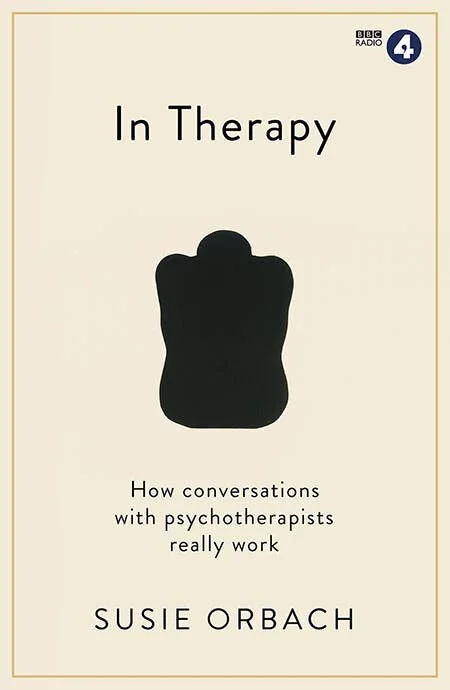Review of ‘In Therapy: The Unfolding’
Through ‘In Therapy’ psychotherapist and writer Susie Orbach seeks to share ‘how conversations with psychotherapists really work’. While there’s no such thing as a reliable roadmap for therapy, as every journey is highly personal and distinctive, it does provide a good sense of how it feels to be sitting in the passenger’s seat. (Please note that I see the passenger as the observer, the reader or listener, rather than the person receiving therapy). Anyone looking to undertake therapy for the first time takes a leap of faith, and perhaps this is a useful indication of the courage needed to make the most of the experience. However, as therapy is also about empowering people its’s equally important to share information that allows them to make an informed choice.
Presented as a series of 10 case studies, we are invited to sit in on extracts of a first session and a follow up session. The sessions are transcriptions of improvised conversations between the therapist and actor. This highlights the level of respect given to confidentiality within the therapeutic relationship. However, it does give a real sense of a session complete with attempts to communicate thoughts and feelings we’re not able to put into words resulting in both comfortable and uncomfortable silences. It also shows how a therapist needs to strike a balance between building a trusting relationship and helping someone to challenge thoughts or behaviours that may no longer be working in their favour.
The transcripts are accompanied by the therapist’s commentary on what’s not being said, which is always a crucial part of the process. Bringing hidden thoughts and feelings into the room allows the therapist and client to try to make sense of them together. I think the commentary is useful in showing how the therapist works with whatever a client shares in any one moment, aiming to support them to explore or to sit safely with a thought, feeling, or memory. It also helpfully shows how there is space for both the therapist and client to change their perspective on something. However, it’s worth noting that there are different approaches to therapy, meaning that some therapists prefer the dynamic of a doctor/patient relationship.
The case studies cover a broad range of clients and reasons for undertaking therapy; the mother and daughter feeling frustrated and disconnected, a couple anxious about the arrival of their baby, a woman disheartened by failed IVF treatment and a relationship breakdown and an older man distressed at his outbursts of anger. This means there is also an opportunity to learn from the experiences of others and how these might be identified by a therapist. However, I’m not sure that there’s anything that can replicate how it feels to talk with someone who responds with honesty, understanding and non-judgement, who has only your best interests, wellbeing and choices at heart.
Other podcasts that look at what goes on within the therapy room include ‘Other People’s Problems’ hosted by feminist therapy specialist Hillary McBride and ‘Where shall we begin’ hosted by renowned couple’s therapist Esther Perel. ‘Love’s Executioner’ is also a famous title by master psychotherapist Irvin Yalom, which is a candid reflection on some of his past work.
Further reading
‘In Therapy’ is published by Profile and Wellcome Collection and is available as a podcast on BBC Sounds (BBC Radio 4).




